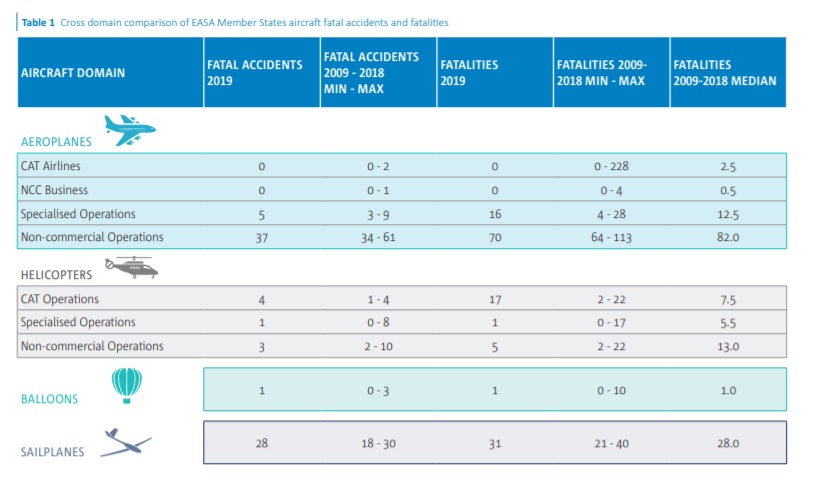EASA published the 2020 version of the EASA Annual Safety Review (ASR). The review has been published since 2005 and is now in its 15th year.
The analysis presented in this review provides the data-driven input that supports the decision-making required for the European Plan for Aviation Safety (EPAS).
The Annual Safety Review provides both a statistical summary of aviation safety in the EASA Member States (MS) and identifies the most important safety challenges faced by European aviation today. This analysis drives the development of safety actions for the EPAS and harnesses the experience of EASA Member States and Industry so as to connect the data with the current and future priorities of the Agency.
Data portfolios are provided for each of the aviation domains presented in this edition and build on the work of previous years. They show the safety issues that have been identified in occurrence data, cross referenced with the key risk areas (or main accident outcomes) to which they contribute. The ASR analysis focuses on aviation safety risks based on occurrence data. This work is a part of the ongoing European Safety Risk Management Process, and in particular, the valuable input from the Network of Analysts2 (NoA) and Collaborative Analysis Groups (CAGs).
EASA Member States Cross Domain Safety Overview
Each domain presented in this review provides the number of fatal accidents and fatalities for 2019 as compared with the preceding ten years, 2009- 2018. Table 1 reflects the chapter structure of the Annual Safety Review. For the aircraft chapters (aeroplanes, rotorcraft, balloons and sailplanes), the definition relates to aircraft operated by an EASA Member State air operator’s certificate (AOC) holder or an aircraft registered in an EASA Member State.

As with the global passenger and cargo data, the number of fatalities in a given domain relates not only to the number of fatal accidents, but also to the number of passengers on board. Over the eleven years shown in Table 1, the number of sailplane fatal accidents is relatively stable each year and the number of fatalities is very similar to the number of fatal accidents.
By contrast, the number of fatalities per year in commercial air transport airline or air taxi accidents ranges from 0 to 228.
Looking across the presented domains, the comparison of 2019 to the preceding decade, 2009-2018, shows a normal year without substantial changes to safety, either positive or negative. However, commercial air transport (CAT) helicopter operations had 4 fatal accidents in 2019, equal to the highest number of accidents per year in the preceding ten years. At 17, the number of fatalities was close to the highest number of fatalities per year (22) and higher than the 2009 – 2018 median of 7.5.
To read the full EASA annual safety review 2020 please click here: https://www.easa.europa.eu/sites/default/files/dfu/easa_asr_2020.pdf







